5. ODIERO ODONJO (THE LUO ENCOUNTER WITH EUROPEANS)
At the very end of the 19 th Century the British colonial administration set up a regional headquarters in Western Kenya, first at Mumias and later at Kisumu. The colonial government sought to submit the Luo population to colonial control and administration. There is a continued debate as to whether the Luo resisted colonization or more or less acquiesced to it.
5.1 EUROPEAN COLONIAL ADMINISTRATION AND TRADITIONAL LUO ORGANISATION
Some Luo clan leaders ( ruoth ) were politically powerful men who often doubled in their function as important spirit diviners. They were therefore highly revered by their communities. Each Luo clan had a set of special ceremonial objects or regalia which the ruoth wore, passed down from generation to generation. These included spears ( tong' ), a three legged stool ( kom nyaluo ) and an axe ( le ). Charles W. Hobley, one of the early administrators of Kavirondo region, took a lot of interest in Luo culture and met with Luo chiefs ( ruoth ), who he then photographed. Most of these chiefs in the first years of colonial rule wore traditional Luo costume.
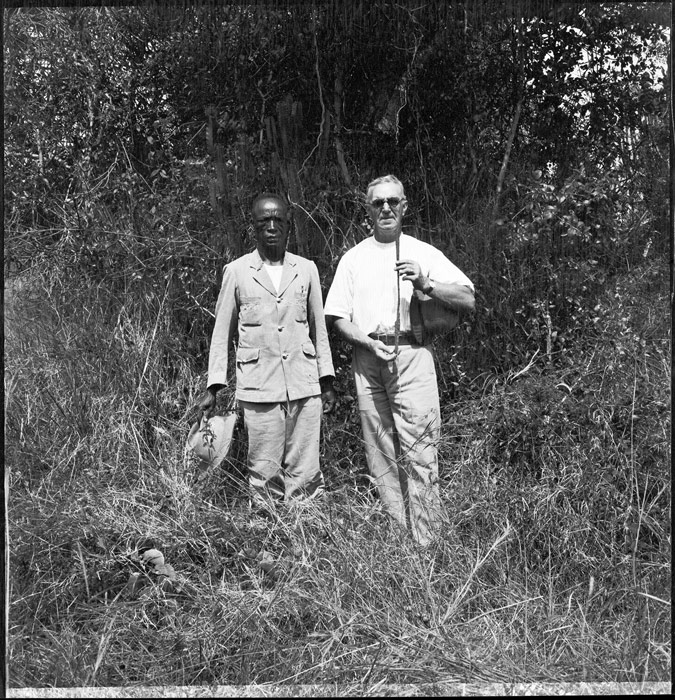
1998.349.269.1
Archdeacon Owen standing with a Luo chief and holding the spear (tong') Alego.
Alego was the name of the Alego clan leader.
Evans-Pritchard, 1936
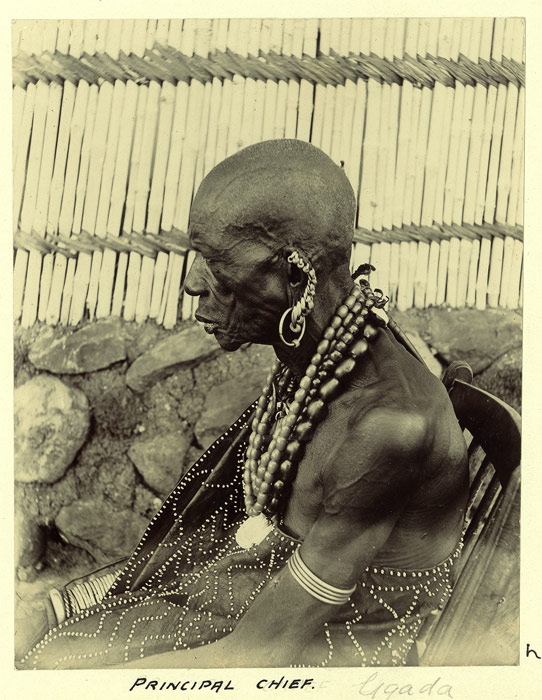
1998.206.4.8
'Chief Ugada' (Probably Chief Ogada of Kisumu)
Charles W. Hobley, around 1900
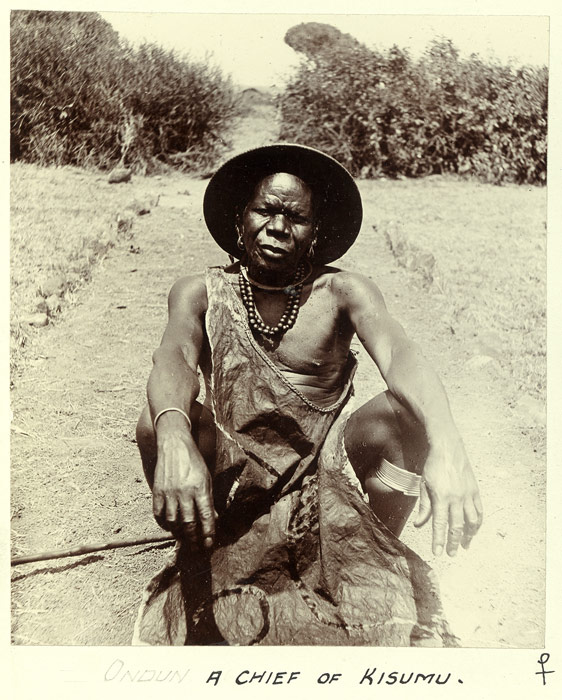
1998.209.45.6
'Chief Ondun' (Probably Chief Ondu of Kisumu/Kajulu)
Charles W. Hobley, around 1900
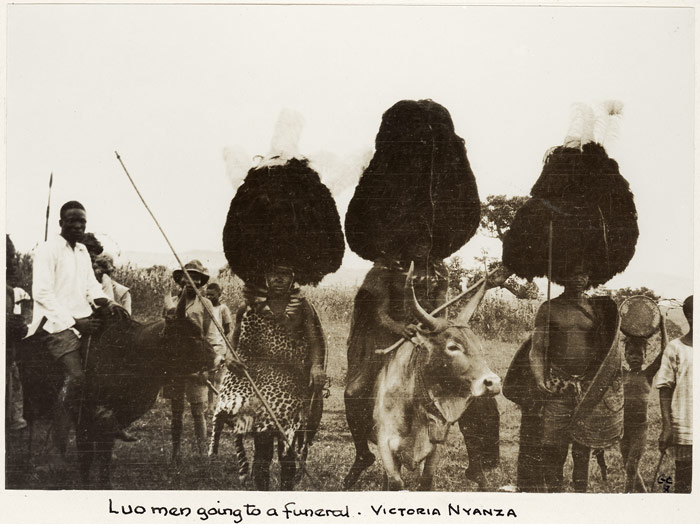
1998.206.6.3
'Head Chief Ukuri' (Probably Chief Kere of Nyakach)
Charles W. Hobley, around 1900
Within the first few decades of the 20th century administration in Luoland began to change. Local chiefs appointed by the colonial administration (often with approval of the clans) began to replace the traditional chief or ruoth .
The new colonial chiefs (still referred to as ruoth ) had to wear colonial uniforms similar to white colonial officers, such as District Commissioners. For a time the chiefs retained their local 'police' (ogulmama ) who were usually not in uniform, but soon even these were trained and given official uniforms.

1998.349.324
A white colonial administrator (probably a District Officer)
Evans-Pritchard, 1936
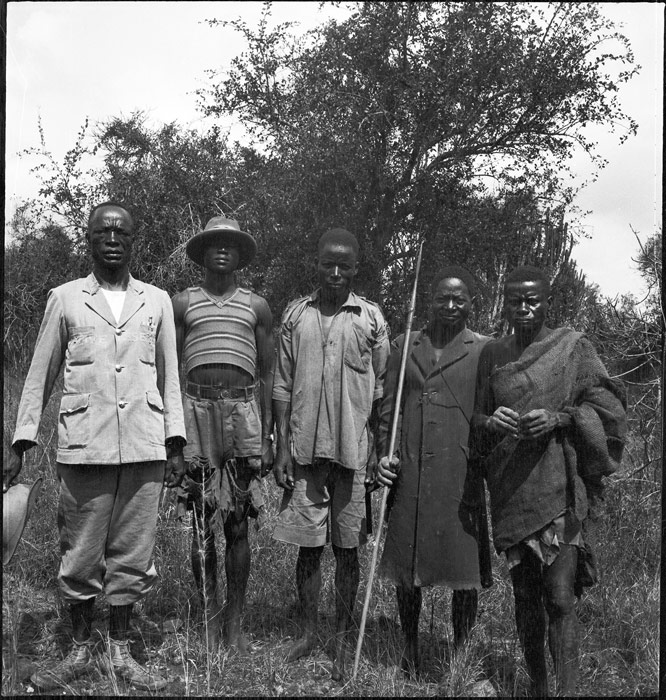
1998.349.21.1
A Luo colonial Chief in Alego named only as Jacob, with his local 'police' or ogulmama
Evans-Pritchard, 1936
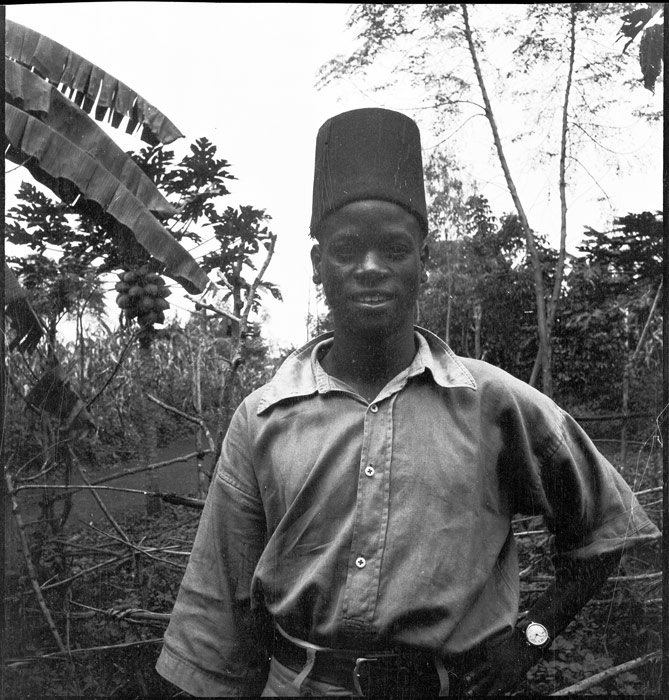
1998.349.130.1
This man may not be a Luo but this is how the Luo colonial 'police' (askari kanga or ogulmama ) in uniform looked
Evans-Pritchard, 1936